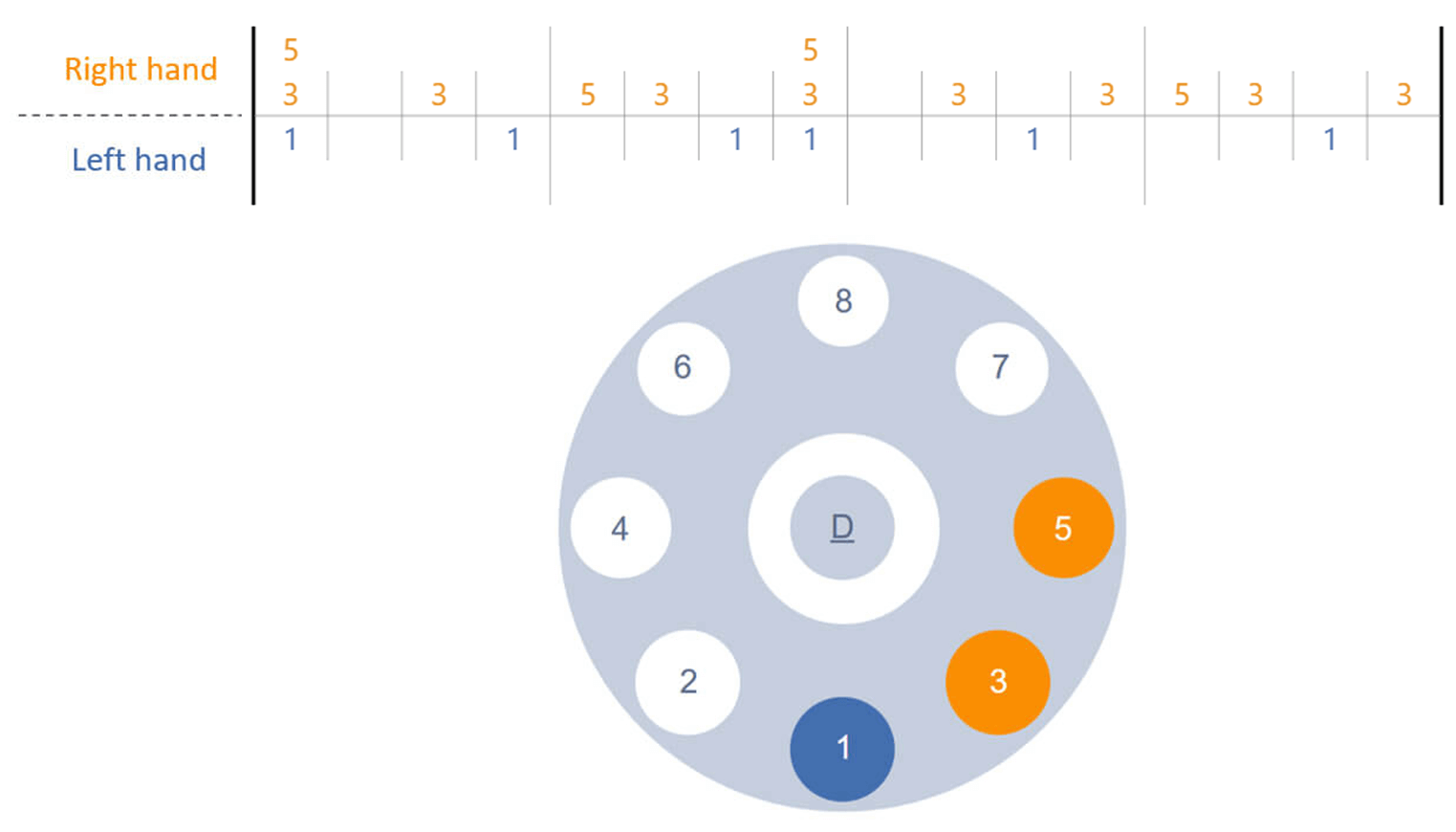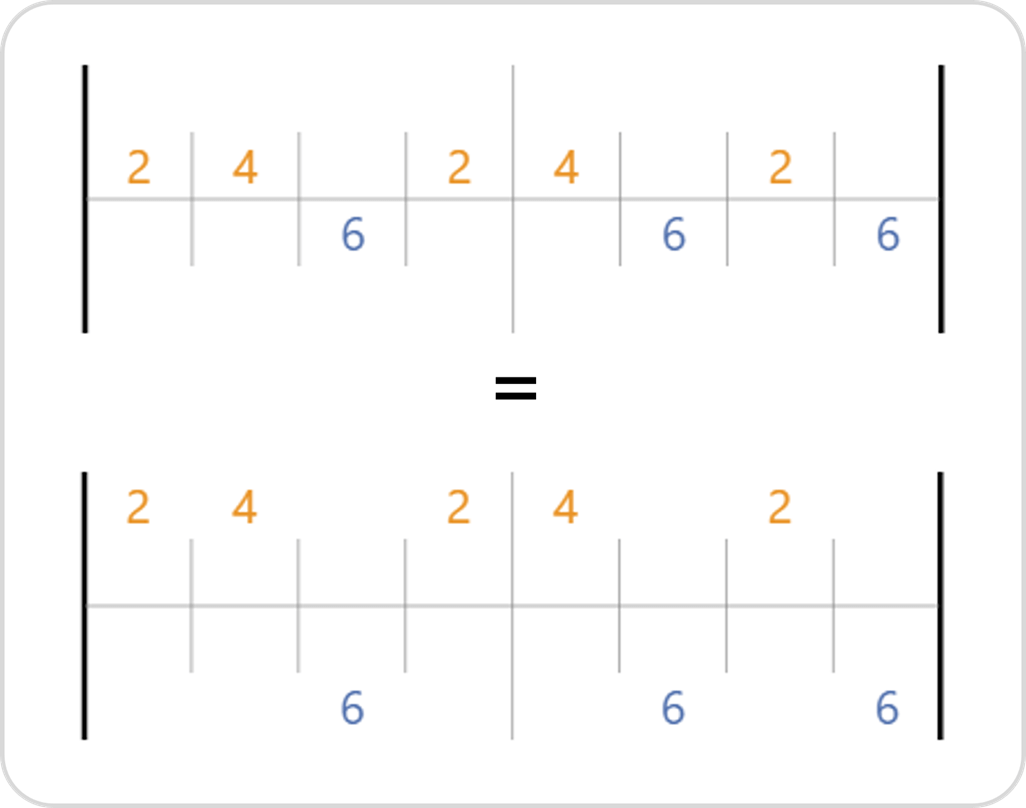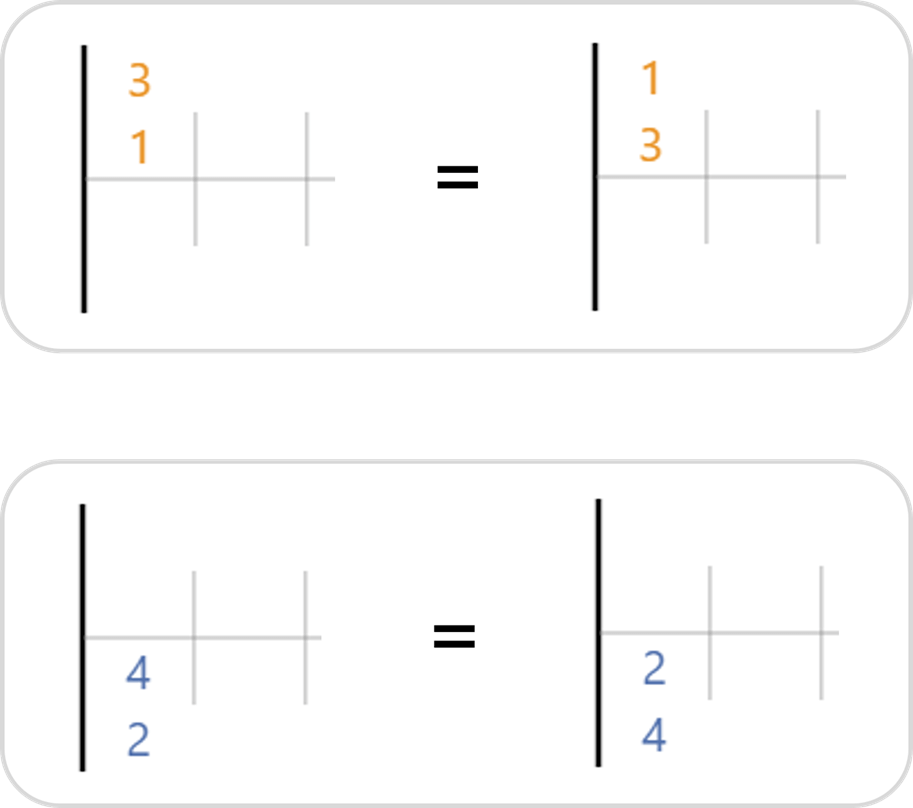Right hand / Left hand
Convention
Each bar is composed of 4 rows:
- The first 2 rows, above the horizontal line, are for notes played by the right hand
- The last 2 rows, below the horizontal line, are for notes played by the left hand
If you are used to piano sheet music, this is the same principle: the upper part is the right hand and the lower part is the left hand.
Colors
Black and white is good when using pen and paper, but in Notepan application we also associate a color with each hand. The color in itself is not important, but we use these ones as default:
- Orange for the right hand
- Blue for the left hand
The main advantage is that it allows to indicate the striking hand on the handpan representation as well:

Chords
Notes contained within the same column are played together as a chord. Consequently, we can play a maximum of 4 notes at a time: 2 with each hand (octopus are not covered in this article...).
Here are some examples:
Some subtleties...
The 2 rows associated with each hand can be used interchangeably. Take the right hand for example, whether we write a note in the 1st row or in the 2nd row has no impact as they both represent the same hand. For that reason, the following notations are equivalent:


Even though these notations are equivalent, the system was designed to be used as follow:
- Use the 1st and 4th rows only to write chords that require more than 2 notes
- Use the two middle rows (one for each hand) the rest of the time